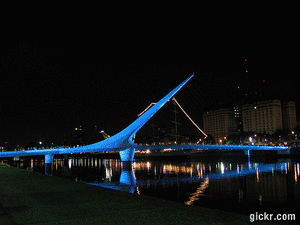I must say that before March 15th, Harrogate 2010 seemed inaccessible. The reason is very simple: I live in Argentina and work full time on a teacher’s salary. Harrogate is not only
During the days before the conference I felt really excited about attending the biggest ELT event of the year and kept thinking about what I was going to learn and how I would make the best use of it afterwards. But I also thought about what I was going to do after the day’s sessions were over, so I pictured myself going back to the hotel, dining on my own… as I didn’t know anybody, except for Nik Peachey and Gavin Dudeney, whom I had met in Argentina the previous year.
So I got to Harrogate on April 6th, the day before the Pre Conference Events and time flew by! Before I realized I was on the plane back to Argentina. So here is what I learnt at Harrogate:
- Although I believed my country’s education system and context was far from ideal, I got to know about other countries´ contexts more closely and I can now understand where we, ourselves, stand and I can focus more readily on what needs to be changed.
- I am mostly interested in technology integration in language education so I chose sessions related to technology. I attended amazing sessions on the use of web 2.0 tools, Twitter, digital game-based learning and virtual worlds by young innovative ELT professionals such as Graham Stanley, Burcu Akyol, Shelly Terrell, Ozge Karaoglu, Russell Stannard, Kyle Mawer, Nicky Hockly, Gavin Dudeney and Petra Pointner among others. In fact, all the technology-related sessions were packed! That shows quite an interesting trend in language education. I am happy to be a part of it in trying to contribute to its development and spread, by promoting change at school level and training teachers in technology integration for language teaching and learning.
- Although I am quite an active “twitterer” myself, I surprisingly found a widespread use of Twitter by teachers, teacher trainers, writers and publishers:
· to get to know people from different parts of the world
· to increase continued professional development options among the members of your customized PLN (Personal Learning Network)
· to set up e-twinning projects with classes all over the world
· to learn about and share valuable resources
· to tweet during sessions both as a note taking alternative and to share what was happening with other “twitterers” either not at the conference or attending other sessions.
- Social life was far from inexistent! That’s definitely also thanks to Twitter. Two hours after arriving in Harrogate I was surrounded by about 20 ELT professionals from around the world… who called me by my name when they saw me! What a nice surprise! I am grateful for the opportunity of making so many new friends who share my passion.
- I also attended sessions by well-established personalities and found out why they are so respected. ELT stars are accessible! I shrank at the sight of ELT celebrities, such as Jeremy Harmer, Ken Wilson and Herbert Puchta to name a few, only to discover they were warm and willing to engage in deep conversation about education and life. I was amazed at their honest commitment to the profession and willingness to keep on learning!











